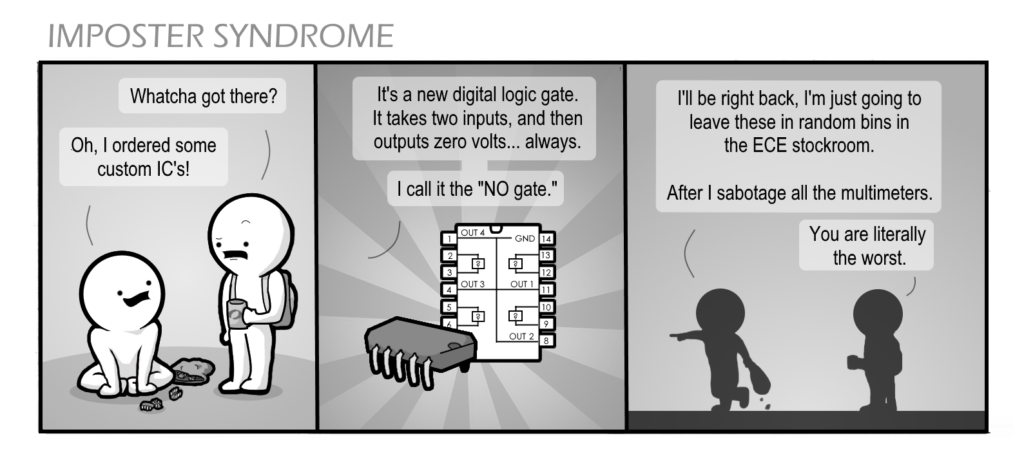It’s time to introduce you to the chaos that is my mere existence. Yes, folks, I’m talking about my unbelievably awful medical history.
First, some background. Here are some things I have been diagnosed with:
Chronic psychophysiological insomnia
Tendonitis of the arms, wrists, hands, knees, and feet
Bursitis of the hips
Raynaud’s disease without gangrene
Chronic migraines
Asthma
Irritable Bowel Syndrome
Major depressive disorder (with one episode)
Bipolar disorder (with major manic episode)
And I like to add Fibromyalgia to the list, because a rheumatologist actually confirmed it, but didn’t write down (which super screwed me over when I ended up in a psych ward). Here’s what he said:
“Sounds like you have chronic, unexplained pain in your whole body. Well, your test results are all clean, so some people might call that Fibromyalgia.”
Notice the implication that he wouldn’t call that Fibromyalgia, for some reason.
My further evidence is this quote from an email I received from a Harvard clinical study on Fibro, which is currently the only way a broke ignorant college student can get access to innovative healthcare:
“From what you told me it seems like you will be a great candidate, I have had many other participants who don’t have an actual diagnosis, so that will not exclude you.”
Which was good enough for me, especially considering this untestable, incurable disease is diagnosed entirely on self-reporting of pain. Which I definitely have.
So, anyway, I’ve clearly got some major medical problems, but that list doesn’t really tell you anything. Here are some of the everyday effects of all my illnesses:
Extreme fatigue (insomnia, Fibromyalgia, migraines)
Difficulty concentrating (insomnia, migraines)
Pain (all of the above)
Hopelessness and irritability (pain, depression, bipolar)
Nasty belly cramps (IBS, womanhood)
Shame (IBS, everything else)
Light, sound, smell, taste, touch sensitivity (migraines, Fibromyalgia)
Loss of appetite (IBS, migraine, the physical act of eating hurts from Fibromyalgia)
Being freezing all the time (Raynaud’s, which means poor circulation)
Hot flashes (same thing, I can’t regulate my temperature from Raynaud’s)
Crying (pain)
Extremely painful muscle stiffness in the morning (Fibromyalgia)
Lots and lots of other unpredictable problems
Inability to recover (insomnia, everything else)
Basically, I wake up every morning feeling like I spent the night tied to active railroad tracks, and it only gets worse from there. And the best part is, it’s pretty much all (currently) incurable.
Sure, there are some kinds of okay treatments for some of these things, but it’s all in the works, and they’re meant for people who only have one of these problems. For example, Tylenol and NSAIDs can sometimes help my soft tissue pain, but it upsets my IBS which causes more pain, especially when combined with caffeine which I take for migraines, but that makes Raynaud’s worse (and believe me, you probably underestimate how painful it is to not be a nice, neutral temperature), and that’s all really stressful which makes my psychological things worse, which makes everything else worse, and whoopie now it’s a downward spiral.
And don’t forget! I was in college.
I thought I’d do something nice for myself, and secure some accommodations. What I didn’t realize is that those are designed for people who have nice, manageable problems. They’re meant to help you be more normal, by giving you slight advantages like being able to move to another room when your environment is too overwhelming, or get extra time on a test. It works all right at most schools, and if it doesn’t, you can at least keep yourself under the radar.
But I wanted something better for myself. I wanted something like me— unusual. Hard to believe. I wanted to go to a tiny, innovative engineering school called Olin College of Engineering, where everything is projects, and experiments, and teamwork, and fun. I loved it.
And despite what happened next, that school is my heart. It’s real small, and everyone (students, faculty, staff) is doing their damnedest to make it awesome. Everyone there works unbelievably hard, but sometimes, there’s just too much work to do, and someone has to suffer for it. This time, that person was me.
The flexibility of experimental, team-based classes was both a blessing and a curse. It meant I could take days off when I needed to, and work when I wanted to, and it would usually be fine. But it also meant I was held far more accountable for my actions than most college students- my peers, friends, and professors were putting faith in me that I would abide by our Honor Code, and do the best I could, always. So, sure, the students (which used to include me) might have a hard time getting to class on time, or at all, but damn do they work hard to deliver on that promise. If you’ve ever met an Oliner, you’ll know what I’m talking about.
What this school grants its students is this: Autonomy. From the school’s perspective, this is because if you give people the resources, teach them the skills, and see what they want to accomplish, the results are astounding. I love how fantastic that is in its own right, but from my perspective, it’s also the only way I can survive.
See, my disabilities don’t fit into pretty accommodating boxes. They’re messy, overwhelming, interactive, and fluctuate constantly (often even in span of just a few minutes). You may have heard how hard it is for anyone with a disability to explain it to someone else, and it’s about a million times harder for someone like me. It’s almost impossible for me to understand and predict my body, much less explain it to someone else. It takes a huge toll on how I can interact with people, so I end up just pretending everything’s fine because it’s just way too tiring to bring another person to an accurate understanding. And I look fine, don’t I?
So when the disabilities counselor asked what accommodations I needed, I came up blank. It was just too hard to come up with an accurate prediction.
Sometimes I need to leave the room, or run around the room to get my circulation going, or disappear for a few days, or nap for 10 minutes, or blindfold myself, or change clothes, or eat, or go to the bathroom, or whatever, and there’s a pretty solid chance I won’t know until it’s happening. Because, guys, I’m in excruciating pain all the time— Pain isn’t an indicator for me anymore. I have very little warning when my body needs something.
The problem is, the whole point of accommodations is to help normalize me into the system. But I have never been, and never will be, normal. I wanted to be, but my body can’t do it. I have to live a lifestyle that’s very very different from the norm because it’s fixing problems that the norm has never even considered. And the really shitty part of that is, what’s accommodating for me isn’t always going to be accommodating for you, and there’s a lot more of you. So when it comes down to it, I don’t even really get a say in the matter.
So, predictably I guess, the whole college thing failed miserably, because I fell into a downward spiral that I couldn’t get out of, and my school understandably attributed it to mania rather than the hoard of other medical problems that I couldn’t really explain, and I ended up in a psych ward. I had a bad time. I’m writing a book about it.
But how did I even make it through the first two years?
Yeah, I’m riddled with awful medical problems that make each other worse. Yeah, no one can help me. But I’m a goddamn human being, so I adapt, and I figure out how to turn my problems into my strengths. For example:
Problem: I can’t work for two weeks because my body is in excruciating pain.
Solution: Use my tendency for mania from bipolar disorder to make up the work.
Problem: I’m experiencing sensory overload from my environment, and I can’t focus, and I’m starting to panic.
Solution: Use my techniques to control my circulation to slow my heartbeat, which will help me be calm, and I can use my engineering skills to think of a better solution.
Problem: I’m in way too much pain to do this.
Solution: I will be in pain anyway (Fibromyalgia). Do it anyway. I’ve experienced enough pain so far that my pain tolerance is exceptional if I can figure out how to focus (caffeine).
And those are just some examples. After twenty years of living like this without perspective on what “normal” is (because guess what runs in the family!), that’s just what I learned to do. Figure out who or what I am, and make it work. I think that, at least, is a pretty standard human experience.
To that end, I’ve found a way to change my story from “despite everything” to “because of everything,” and even though I’ve suffered more than any person should from merely existing, I intend to make good on my internal promise to make this worth it. I’m going to make this world a place where someone like me can exist peacefully (and you’ll probably all benefit in the process).
So good luck, my friends, and keep on chugging. If I can do it, you most certainly can.
Yours,
Charlie
P.S. There’s like a lot more I want to say, but as I said before, it’s really hard to communicate my struggle. So just stay tuned, if you’re curious. Oh and, if you’ve gone through something similar and want a buddy, I gotchu fam. Stay strong.


 Last month, in Mitch Cieminski’s article, “The Mercator Needs no Defense”, he made several compelling arguments advocating for the globe in favor of maps, and the Mercator Projection in particular. While the globe has its distinct advantages, so too do maps. We could argue for days about when maps are better than globes and which projection is best (the answer is Lee), but I fear Mr. Cieminski as well as many other readers may have taken my argument too far. To be clear, my article was merely a thought experiment, not to be taken seriously. After all, the entire notion of a map projection is nonsensical. To “project” the Earth onto a plane implies the Earth is not a plane to begin with. Round Earth Theory is an unfortunately widespread misconception that seems to have, in spite of obvious evidence all around us and empirical measurements of the Earth’s lack of curvature, made its way into Olin. I assumed while writing my little thought experiment that all readers would be aware of the true nature of the Earth, but I see now that I will need to educate the Olin community.
Last month, in Mitch Cieminski’s article, “The Mercator Needs no Defense”, he made several compelling arguments advocating for the globe in favor of maps, and the Mercator Projection in particular. While the globe has its distinct advantages, so too do maps. We could argue for days about when maps are better than globes and which projection is best (the answer is Lee), but I fear Mr. Cieminski as well as many other readers may have taken my argument too far. To be clear, my article was merely a thought experiment, not to be taken seriously. After all, the entire notion of a map projection is nonsensical. To “project” the Earth onto a plane implies the Earth is not a plane to begin with. Round Earth Theory is an unfortunately widespread misconception that seems to have, in spite of obvious evidence all around us and empirical measurements of the Earth’s lack of curvature, made its way into Olin. I assumed while writing my little thought experiment that all readers would be aware of the true nature of the Earth, but I see now that I will need to educate the Olin community.

